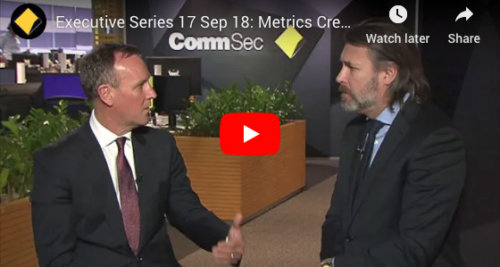5 reasons why private debt should be on your investment radar
Inflationary pressure has been increasing globally for the last six months, as seen in higher commodity prices and accelerating consumer prices. This is most evident in the US where the economy’s rebound from the COVID-19 pandemic is driving the biggest surge in consumer prices in nearly 13 years. The US Consumer Price Index (CPI) rose to a bigger-than-expected 5% in May, its highest level since August 2008, driven by major increases in prices for big ticket items such as used cars, air travel, and accommodation.
The pickup in prices reflects many factors, including massive pandemic-related stimulus, supply chain bottlenecks, and higher wages as extended unemployment benefits discouraged workforce participation.
While officials at the US Federal Reserve have described rising inflation as transitory, economists are looking out for signs of a more sustained increase, which could compel the Fed to tighten monetary policy earlier than planned, or to react more aggressively later, to achieve their goal of 2% average inflation and prevent the economy from overheating.
The Reserve Bank of Australia has reaffirmed its commitment to keeping the official cash rate close to zero, despite signs of rising inflation around the world, with the local CPI so far remaining relatively contained. However commercial lenders are sensing a shift in the economy and starting to raise longer-term fixed mortgage rates.
So why should investors keep an eye on inflation?
Inflation poses a threat to investors because it chips away at the purchasing power of savings and investment returns. It can be particularly damaging to returns on fixed income investments. Because the interest rate on most bonds and other fixed income investments is fixed until maturity, investors risk missing out on the income boost from higher interest rates as the global economy recovers. As inflation concerns push up market interest rates, the capital value of the bonds in an investment portfolio can also decline because the present value of those fixed interest payments declines.
Equity markets can also be more volatile during inflationary periods, with growth stocks retreating. Tech stocks are particularly vulnerable to higher interest rates which erode the value of future cash flows. Many big tech companies expect a larger proportion of their profits to come farther out into the future relative to the expectations of value companies. So, how can investors protect their portfolios and their income in the current environment?
While interest rates remain low at present, and inflation remains an emerging risk, now is the time for investors to be proactive in reviewing their portfolio to ensure their capital is protected and they are well positioned to take advantage of rising rates. Here are five reasons to look beyond traditional asset classes and consider investing in private markets and in particular the private corporate loan market.
1. The floating rate structure of corporate loans protects against inflation.
Corporate loans offer protection against inflation because they earn their returns from interest that is generally charged at a floating rate. The interest on Australian corporate loans is usually structured as an additional margin over the benchmark Bank Bill Swap Rate (BBSW), which is correlated with the RBA Cash Rate.
In this way, the returns on corporate loans keep pace with inflation, helping investors to maintain their purchasing power even as prices of goods and services rise.
2. If interest rates rise, your returns should rise too.
The floating rate nature of corporate loans means that you won’t miss out on higher returns if official interest rates rise.
Markets are pricing in a possibility that rising inflation in the US could lead the US Federal Reserve to ease off on its bond buying or even raise official interest rates sooner than expected. Many other countries around the world will face similar risks of rising inflation as their economies recover at varying paces from the COVID-19 recession.
The BBSW, to which most corporate loan returns are tethered, is essentially the rate at which Australia’s major banks are willing to lend short term money to other banks. It reflects not only the current level of the RBA cash rate but also the expectations the banks have of future cash rate settings.
In essence, the linking of corporate loan interest to the BBSW means that if official interest rates are on the rise, so too will be the returns you are receiving on the loans you are invested in.
3. Corporate loans can deliver reliable income even when markets are volatile.
The Australian corporate loan asset class has proven its ability to deliver stable income to investors even when financial markets are at their most volatile.
Interest rates on corporate loans are received from borrowers at specified intervals under the binding terms of their loan contract. This contrasts with dividends, which are paid to equity holders at the company’s discretion.
If inflation continues to create movement in equity and bond markets, corporate loans in a well-managed fund have the potential to deliver uninterrupted and consistent income to investors – especially important for investors relying on regular income to maintain their lifestyle.
4. The risk of capital loss is low.
Because they are not listed, corporate loan valuations don’t experience the same level of volatility as listed equities. Many equity investors during the pandemic-related volatility last year saw the value of their holdings reduced materially as companies raised equity capital to shore up their balance sheets.
Corporate debt is a lower risk investment than equity because Australian corporate insolvency laws give priority to the interests of creditors in claims over the assets of a business. Loans also enjoy covenants and controls that enable the provider with mechanisms to monitor risk and act pro-actively to protect value when necessary.
In a private market, lenders directly negotiate with borrowers, and thus have greater influence on terms. Covenants are negotiated and provide protection and early warning of changing risks.
As a result of the protections in place, the corporate loan loss rates for Australian companies have been very low for many years.
5. The asset class is delivering attractive returns to investors right now, even when rates are low.
While the risks of rising inflation are growing, no one has a crystal ball to pinpoint when it will transform from risk to reality, and when official interest rates will rise.
Inflation concerns stem from the possibility that the US and broader global economy could rebound from the COVID-19 recession faster than expected. Washington has already approved about US$3 trillion of financial aid for families, unemployed workers and struggling businesses in the US since the COVID-19 pandemic began. In March, US president Joe Biden signed a US$1.9 trillion economic relief bill that saw the government send $1,400 cheques to most Americans and in April he set out plans for more government spending on jobs, education, and social care. All this extra money in the system has built up savings, which is now being spent as the economy reopens, driving prices higher. This combined with record low interest rates, has already pushed equity prices to record highs, and markets are starting to price in the risk that it could prompt a massive boom in consumer demand if the vaccine rollout continues to be successful and the US economy makes a strong recovery.
Yet there remains a real possibility that the global economy could take a turn for the worse, if for example the global vaccine rollout fails and the world’s central banks might actively work to keep interest rates low. Major central banks fear that interfering with what should be a transitory spike in inflation will risk slowing recovery prematurely. They would rather absorb any spike in inflation and allow recovery to continue until full employment is reached, which may be a few years away. The Federal Reserve and RBA are likely to slow bond buying and if they remain dovish on interest rates, as expected, it will mean any near-term inflation-driven bond market panic, and hit to share markets, will likely be short -lived.
The good news is corporate loans can provide attractive risk-adjusted returns even in a low interest rate environment.
Accessing the market
Corporate loans are not an asset class that investors can easily access directly, and therefore need to be accessed via a manager with scale and expertise in this market. When accessing corporate loan investments through an ASX-listed structure, investors enjoy the premium income distributions associated with this asset class, without having to lock up capital for years.
While rates are low, and income is hard to come by, a well-managed corporate loan fund can be a rare source of reliable monthly income and provide attractive risk-adjusted returns compared to equities and traditional fixed income – with less volatility than equity markets. And when rates do start to rise, you’ll be protected against inflation as you watch your income rise.
Other News
Metrics Innovate Reconciliation Action Plan
We are proud to share our second Reconciliation Action Plan (RAP), reaffirming our commitment to truth, healing and unity. We…
Metrics response to ASIC’s report on Advancing Australia’s Evolving Capital Markets
Attributable to Metrics Group CEO and Managing Partner, Andrew Lockhart: Metrics Credit Partners (“Metrics”) welcomes ASIC’s roadmap to promote strong,…
INSIGHTS
MCP Income Opportunities Trust (MOT) lists on ASX
Sydney, 29 April 2019: The Trust Company (RE Services) Limited (ABN 45 003 278 831) (Responsible Entity) is the responsible…
MCP Master Income Trust wins Lonsec Listed Fund Award
The award came a year after MXT was listed on the Australian Securities Exchange






